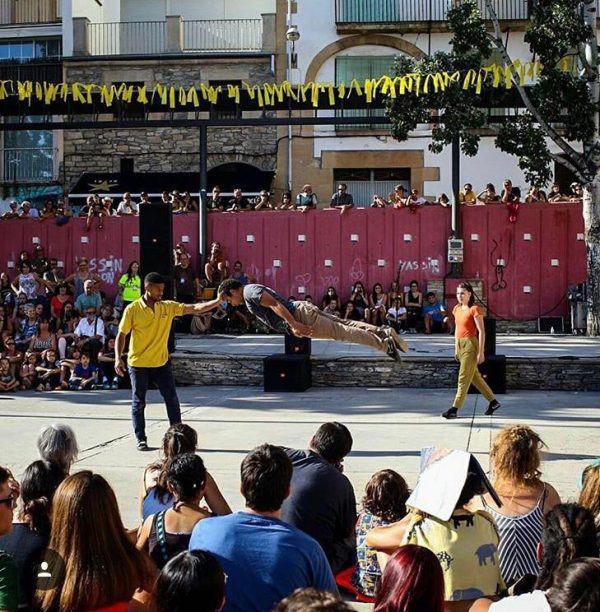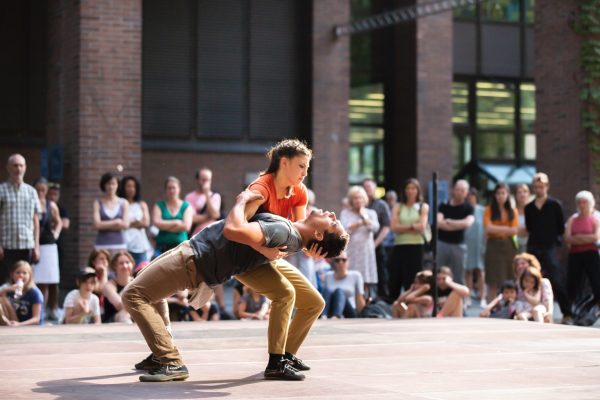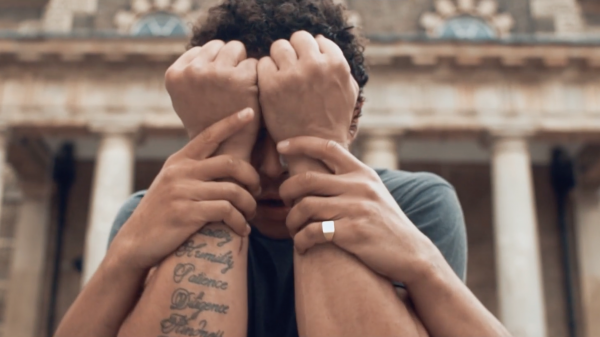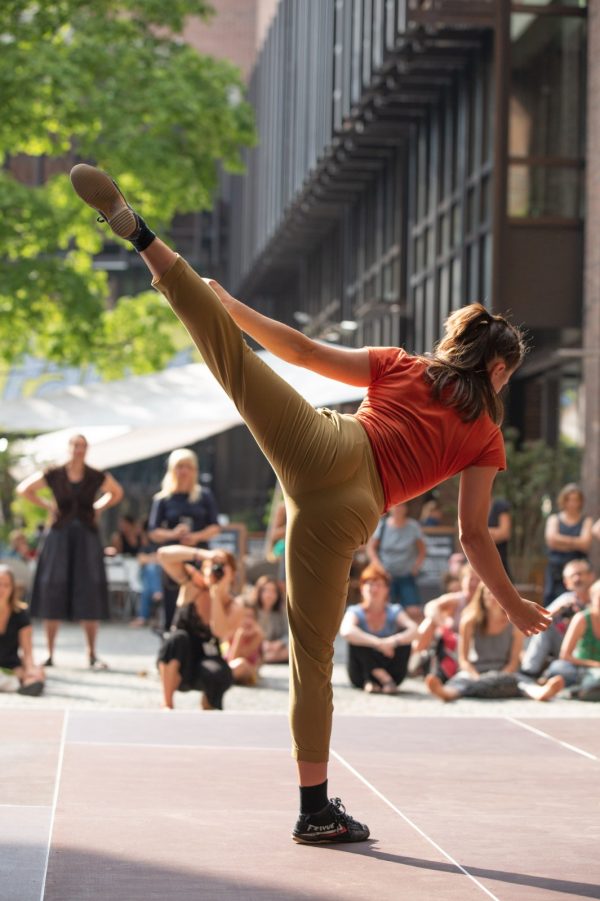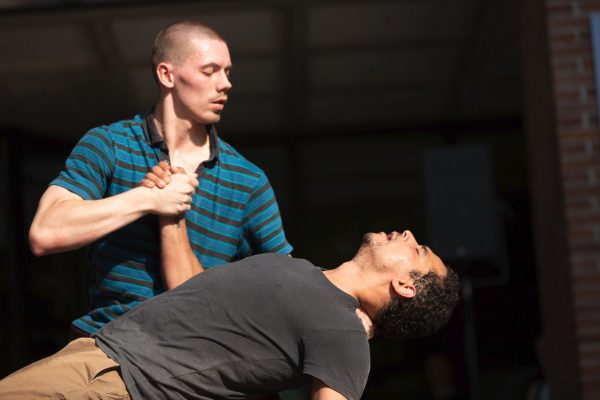Oct 2018 | MOVEMENT FOR THE MIND
To coincide with World Mental Health Day this month, our Co-Artistic Director, Kevin Edward Turner, talks us through the creative process for Witness This, an outdoor choreography which explores his own mental health.
“When I make a new work I almost think of it as a film. While making Witness This, a work which has toured an array of outdoor festivals since its creation, I imagined the piece as a film on screen.
With four characters, I envisaged the conversations that would take place between them through dance and movement in each scene. This helped me focus on the theatricality and emotional journey of the piece.
“My task as the choreographer is to build up the scenes, movement by movement, step by step, moment by moment”
When creating a new work, to an extent the creative process is different every time as you try to create the right conditions for that work to evolve and develop in its own world and with its own logic. That said, there are four overarching stages that I go through in making a new choreography.
Stage one: Research and development
The themes and the ideas are always the departure point for creation. This involves reading and gathering information on the concept that is to be explored. Witness This is an adaptation and reimagining of a stage work called ‘Witness’. The themes behind the work explore mental health, more specifically my own personal journey with bipolar, focusing on a crisis I had a few years ago that had an impact on me and my loved ones.
For research, I interviewed my loved ones to get a better understanding of what went on in my crisis. I asked them about any anecdotes from when I was ill, how I made them feel and how it felt seeing me so unwell. This was important as my memory of this time is murky.
When I was ill, I wrote some crazy and off-the-wall things, which I also revisited for ideas. I also read about bipolar so I could fully understand the condition. Once I had this bag of stories, experiences and feelings, I started to pull the ideas together into a storyboard. By the time I got in the studio, I knew the world that the scenes would inhabit.
Stage two: Creative development
For the creative development process, I’m in the studio with the dancers who will perform in the piece. My task as the choreographer is to build up the scenes, movement by movement, step by step, moment by moment. The objective is to find ways to explore, create and physically manifest the themes and concepts.
Through a combination of crafting and making material, improvisation and creative tasks, I generate the movement and moments that are needed for each idea. The dancers play a really important role in this part of the process. They manifest the ideas and intentions of the work.
The work that we make at Company Chameleon requires the dancers to be artists not bodies. They will improvise and explore tasks in order to bring some of their own ideas into the piece. The work lives and breathes through them.
Stage three: Editing and refining
I then group the different ideas into scenes, and edit, develop and refine. Here the focus is on stripping back to the essence of an idea or emphasising and expanding. It is an intuitive as well as a technical exercises.
Stage four: Structuring and order
At this point I begin to focus on the structure of the piece. Through experimenting with different structures and order, I find the journey that makes the most sense. At the end of the creation, as with all our work, we performed the piece through a ‘sharing’ with a small audience.
The sharing is an opportunity to hear what people think about the piece and to hear about what they saw and how the piece made them feel. As the choreographer, I’m so close to the piece by this stage, this objectivity helps with any final tweaks in the creative process.
Once on tour, the work is like a living organism and needs to breathe and grow. You feel the response from the audience each time you perform and you go deeper into the work the more you perform it. This leads to changes in direction and couldn’t be more important, as the goal is to make the work speak, and be the best it can be.”
Witness This tours to Bell Square, Hounslow, London on Sat 20 October, find out more here. The piece was commissioned by Without Walls, Brighton Festival and Ageas Salisbury International Arts Festival.
Article first published on ArtsProfessional.

